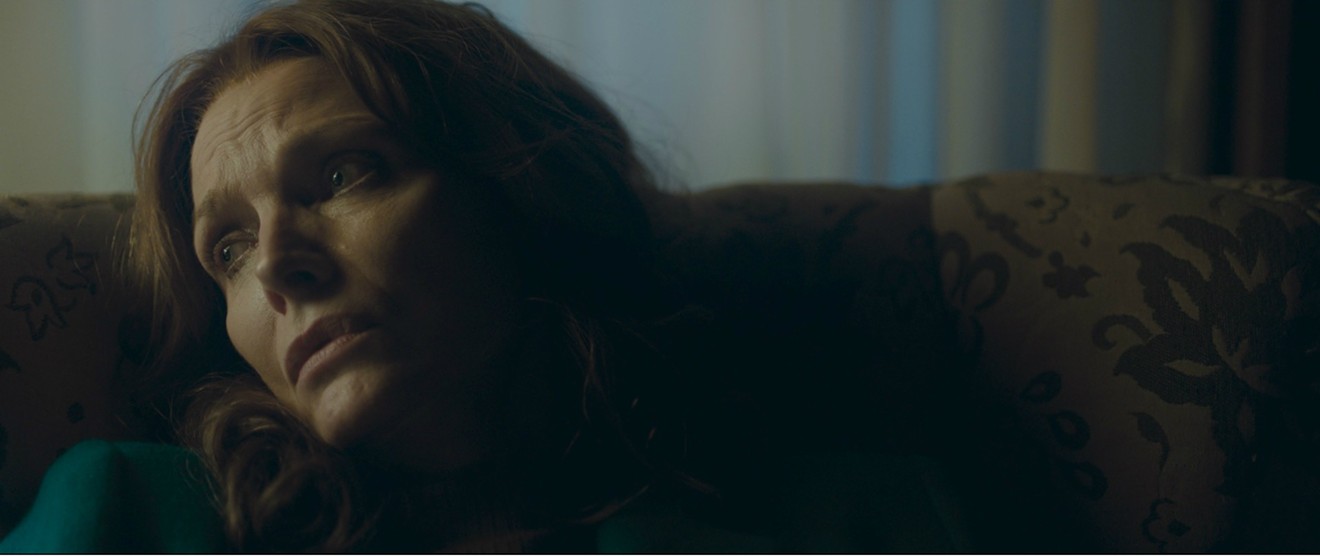There has always been an air of loneliness about Michelle Pfeiffer onscreen. Even in her glamorous, gorgeous movie-star heyday, she often played women who were somewhat removed from the world. Catwoman, after all, was a cat lady, Countess Ellen Olenska in The Age of Innocence an outcast, Married to the Mob’s Angela de Marco a widow out of step with the Mafia housewives surrounding her. It wasn’t so much unapproachability or aloofness that she conveyed, but a reserve that suggested — even in some of her comedies — melancholy, pain, dreams deferred.
I hadn’t fully realized this until I saw Andrew Dosunmu’s marvelous, shattering Where is Kyra?, in which the actress is often the sole figure onscreen, playing a New York woman sliding deeper into poverty and despair. Although the film might seem a departure for her — and at least in terms of budget, it certainly is — watching it, I felt that Dosunmu had connected to something elemental within Pfeiffer, that solitude that brought subtle dimension to her earlier, more famous roles. This is the kind of part and the kind of performance that makes you see an actor’s entire career in a new light. And it’s probably the best she’s ever been.
When we first meet Pfeiffer’s Kyra, she’s living in a small, cluttered apartment caring for her elderly, ailing mother. She already seems like she’s at the end of her rope … and then mom dies. Unable to find any work — she’s either too old, too late or too poor to get the gigs — Kyra descends further into desperation. She strikes a tensely romantic relationship with a nursing home attendant (played by Kiefer Sutherland) who is trying to stay on the straight and narrow after screwing up his life. He’s poor, too, but at least he has money for beer and food, and he likes spending it on her. Is she with him because she needs help or does she really care for him? The reasons aren’t clear to us — and they’re probably not clear to Kyra, either.
The story turns on what might have been just a quirky plot-point in another movie: When mom’s pension checks keep coming even after her death, Kyra begins dressing as the dead woman to try and cash them at the bank. This is not, however, the story of a grifter or a welfare cheat. It’s instead about the things we do to survive in extreme circumstances, and Dosunmu’s grim gaze never wavers from Kyra’s predicament. The director and cinematographer Bradford Young sheathe Kyra in oppressive darkness, and they hold on her for extended periods, even when other characters are speaking or acting. Close-ups often show her half-concealed in the gloom, emerging from pitch-black corners of the screen. No lamp gives off enough light, no street scene is bright enough. A pall has descended over this woman’s life. Rarely on film has the sheer debilitating exhaustion of poverty been conveyed so clearly.
Dosunmu — whose last film was the sublime Mother of George (written, like Kyra, by Darci Picoult) — is an electrifying filmmaker, a former photographer with a striking sense of composition as well as a willingness to experiment with image, audio and narrative. He brings rhythmic rumblings to the soundtrack, walls of noise that drift in and out, a disorienting symphony of subways, street noise, chatter and silence. Kyra is both of this world and outside it — part of a landscape of poverty and sadness that’s ever-present, but also often invisible.
The whole movie is built on such contrasts. The director is fond of static, off-balance compositions with very shallow focus, but he also likes to point his camera directly into his actress’ face, one of the great visages of modern cinema. Pfeiffer is beautiful, but when we look at Kyra, what we see is fatigue, anger, loneliness, hopelessness. The way Dosunmu shoots her, she appears somehow both fragile and unchanging: It wouldn’t take much to turn Kyra into a blur, to erase her from the screen completely; but the broader sorrow that she represents will never go away. She’s in the midst of disappearing, but she’s also everywhere.
[
{
"name": "Air - MediumRectangle - Inline Content - Mobile Display Size",
"component": "19274298",
"insertPoint": "2",
"requiredCountToDisplay": "2"
},{
"name": "Editor Picks",
"component": "17482312",
"insertPoint": "4",
"requiredCountToDisplay": "1"
},{
"name": "Inline Links",
"component": "18711090",
"insertPoint": "8th",
"startingPoint": 8,
"requiredCountToDisplay": "7",
"maxInsertions": 25
},{
"name": "Air - MediumRectangle - Combo - Inline Content",
"component": "17482310",
"insertPoint": "8th",
"startingPoint": 8,
"requiredCountToDisplay": "7",
"maxInsertions": 25
},{
"name": "Inline Links",
"component": "18711090",
"insertPoint": "8th",
"startingPoint": 12,
"requiredCountToDisplay": "11",
"maxInsertions": 25
},{
"name": "Air - Leaderboard Tower - Combo - Inline Content",
"component": "17482313",
"insertPoint": "8th",
"startingPoint": 12,
"requiredCountToDisplay": "11",
"maxInsertions": 25
}
]











